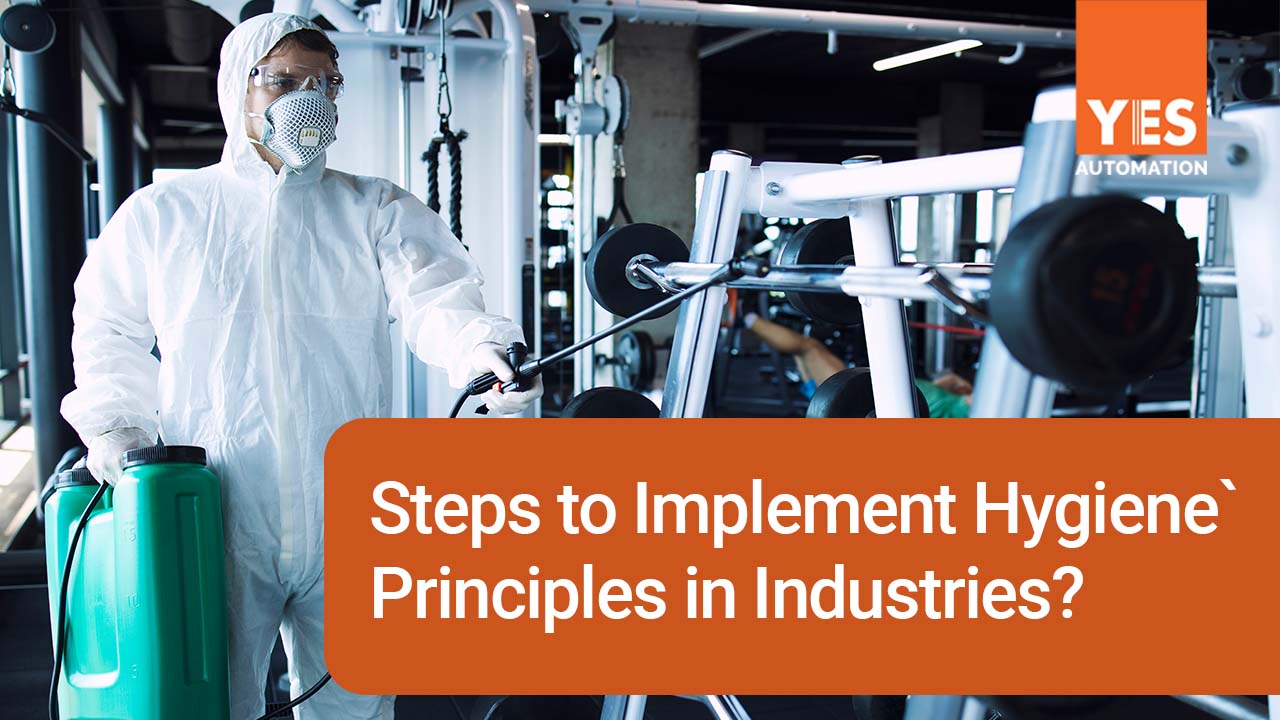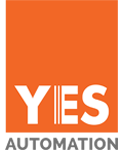What Are The Steps To Implement Hygiene Principles In Industries?

Some industrial environment conditions will have adverse effects on the employees and industrial hygiene is about anticipation, recognition, evaluation, and control of these hazardous industrial environmental conditions. There should be a multidisciplinary approach to industrial hygiene and the recognition of possible health hazards in the working area. In industries, people are exposed to more health hazards especially in scrap yards and at other scrap processing facilities.
In every industry, controlling workplace health hazards is necessary to keep workers safe and healthy. The main constraint of industrial hygiene is a company’s limited time and resources and because of this companies could be inclined to jump right into industrial hygiene assessments. It is good to understand the aspects of industrial hygiene before making those assessments.
A hygienic working place will have a proper air purification system, cleaning system, health check-ups, etc. A team will be dedicated to cleaning and they should have all cleaning facilities including the best Cleanin Machines, Cleaning chemicals, and other small and big equipment, etc. Select the best cleaning machine for the floor according to your cleaning requirement.
There are many quality floor cleaning machines that have manual, semi-automatic, and automatic functions, check which one will suit your industry. If you have a very small industry then you might require a manually operated floor machine cleaner than a high-end floor cleaning machine.
Before selecting a cleaning machine for the floor you can consult an expert to know which one is doing its job efficiently and cost-effectively. Usually, large industries nowadays depend on Automatic floor cleaning machines or semi-automatic floor cleaning machines because of their high and fast performance. There all will become a part to control the health hazard and will keep the working environment hygienic and healthy.
There are several components that contribute to industrial hygiene programs that include a written policy/program statement, procedure of hazard recognition, assessment of hazard evaluation and exposure, hazard control, training the employee, employee involvement, evaluation and audit of the program, and record keeping.
5 Principles Of Industrial Hygiene
The 5 basic principles or fundamentals of industrial hygiene to prevent injury and illness applied by occupational hygienists are ;- 1)Anticipation
- 2)Recognition
- 3)Evaluation
- 4)Control
- 5)Confirm
- Health Hazards Anticipation
To keep the workplace safe from all hazards, the Anticipation of Health Hazards is necessary as the first principle of industrial hygiene. In this principle, to collect information about the design of the workplace, operations, processes, work tasks, materials, and the population of the workers a survey is conducted.
For the quick identification of all the chemical hazards in the workplace, we have the current inventory of chemicals and their Safety Data Sheets. to prioritize which hazards need to be investigated we can analyze the hazardous properties of each chemical onsite.
Safety data sheets are documents that contain a list of the properties of each chemical an employee could come into contact with. With the help of Safety data sheets, we can identify potential hazards.
Industry owners should always double-check their scrap suppliers whether it is reliable and are following the established guidelines and should obtain Safety data sheets and labels for the scrap materials where available.
During this phase, we have identified if there is any potential exposure like employees working in an environment where there is greater exposure and no proper ventilation or places where the workers are exposed to huge amounts of dust.
In nonferrous recycling industries workers used to suffer from illness caused by poisoning from materials like lead or cadmium, repeated trauma disorders, diseases or disorders affected to the skin, respiratory problems due to breathing toxic agents, or problems caused by coming in contact with toxic substances. Like this, we have to anticipate each industry's health hazards.
Check out the How Swiming Pool Cleaning Machines Make Venue Clean-Up Jobs Easy
- Health Hazards Recognition
The second principle of industrial hygiene is the recognition of health hazards which is very important to recognize and understand the potential hazards. In this principle, potential hazards of the work environment, internal processes, job tasks, chemical hazards, and physical hazards at a workplace are recognized and comprehended. For example, there are some employees who work in an area with poor ventilation and have greater exposure to occupational hazards.
Some employees' work tasks generate a lot of dust and do work shifts that can last for a long time. individual work tasks also include in this and how these tasks will affect alike work activities that could create exposure to hazards for other workers in the facility which are also referred to as simultaneous operations. There are a lot of hazardous industrial issues to be recognized in this principle.
- Health Hazards Evaluation
Evaluation of exposure as the third principle of industrial hygiene, the primary means of reducing employee exposure to occupational hazards are considered engineering, work practice, and administrative controls. Now it’s time to evaluate the risk of exposure through an Occupational Exposure assessment after anticipating and recognizing your health hazards.
In the olden days' evaluation was referred to as workplace monitoring. And this monitoring could only be done by a qualified professional like an industrial or occupational hygienist since the work environment and the measuring instruments were all complex.
Monitoring the Industrial Hygiene
To catch the exposure level of a particular population of workers at a certain time of their work activities we need Industrial hygiene monitoring. Where this measurement can be conducted? It is on those with the highest potential exposure, or a representative exposure. This measurement can also refer to a similar exposure group (SEG), that is workers who perform the same tasks with similar materials, at the same frequency. a specific physical, biological, or chemical agent can be measured by Industrial hygiene monitoring, where the exposure occurs.
The variations in exposure are also considered by monitoring during different work shifts or facility maintenance activities like turnarounds. Monitoring is conducted to have a defined purpose or question it is trying to answer. To determine, for the hazardous product, if the exposure has happened safely over or below the OEL (occupational exposure limits). Or to determine if exposure results are acceptable, unacceptable, or uncertain through the qualitative and quantitative analysis of data from monitoring.
- Control Over Worker Exposure
The fourth principle of industrial hygiene is Controlling worker exposure. controls need to be implemented to protect workers when hazardous exposure is determined to be unacceptable. To guide decisions on a multifaceted approach to exposure control, the hierarchy of controls should be used. Once elimination, substitution, engineering controls, and administrative practices are considered then only you can apply control over the Personal Protective Equipment or PPE first.
- Control Measure’s Confirmation
The last and fifth principle of industrial hygiene is the confirmation of Control Measures. This fundamental of industrial hygiene is to assess the performance of hazard control measures and followed by the worker exposure to the hazards. After Investigating existing or potential issues it is necessary to apply corrective actions and this is also a part of confirming that your industrial hygiene program is effective. The key to tracking and trend the success of your industrial hygiene program is maintaining data and reports to prevent injury, illness, or negative effects on the well-being of workers.
Conclusion On The Steps To Implement Hygiene Principles In Industries
The fundamentals of occupational or industrial hygiene are dynamic and require continual evaluation and reassessment, especially because of the chance for new hazards to be introduced to the workplace and for the facilities to change. People are the workplace’s most valuable asset and to protect these workers we have to follow the principles of industrial hygiene.
To meet all the standards make sure you keep the industrial environment is kept healthy and safe. For that, you should have sure workers are not exposed to any hazardous air or substances. Use an automatic floor cleaning machine to clean the industrial floor, keep the air breathable build maximum ventilation in the working area, and make sure you have installed an air purifier, and consider implementing all hygiene factors.
YES Automation is one of the best floor cleaning machine suppliers in the UAE. We are not only the distributor of cleaning machines for the floor and other cleaning products. and we have a world-class brand with us. The cleaning product that we supply is of high quality, high performance, and cost-effective. Please feel free to visit the Yes Automation showroom and don't forget to visit our demo center to see the performance of our cleaning machines and equipment.
Frequently Asked Questions On The Steps To Implement Hygiene Principles In Industries
What are occupational health and safety principles?
There are three fundamental rights that are entitled to all employees by the Occupational Health and Safety Act. The first one is the right to know about health and safety affairs. The second right is to partake in decisions that could impact their health and safety. And the last and third one is to reject work that could affect their health and safety and that of others.
How do you explain the role of occupational hygiene?
Role: Assist employers, Improve employee workplace conditions, Improve work practices
Through: Quantifying exposure levels, Assessing the risk to employees, Recommending control measures to minimize exposure in accordance with legislation.
What are 3 occupational hygiene components?
Identification of potential health hazards
Evaluation of workplace health hazards.
Control of workplace health hazards.
These are the main three components of occupational hygiene. The first step in a prevention program is the identification of potential health hazards. And then Labels, MSDSs, and walk-through inspections are done.



